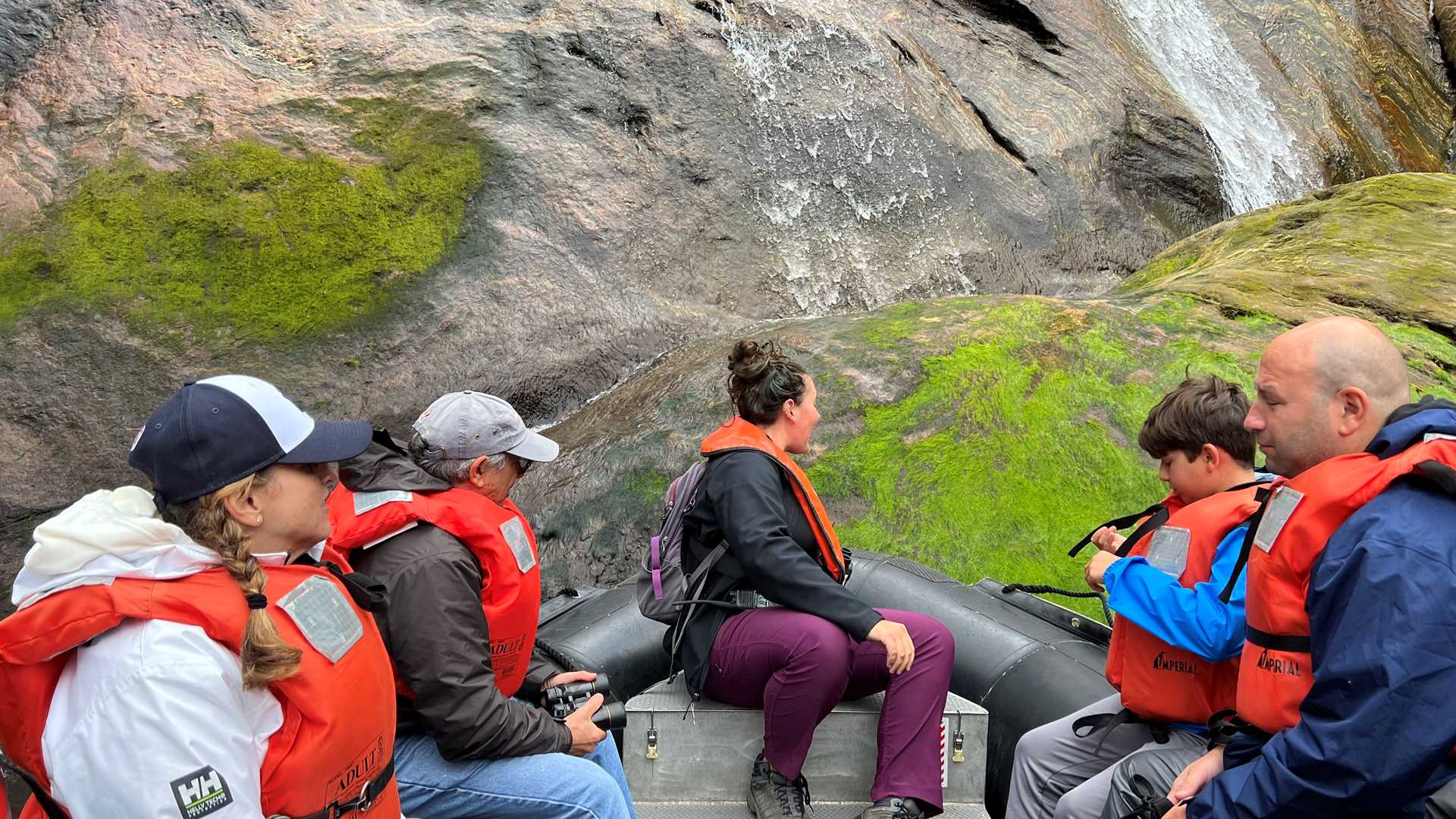This morning, National Geographic Sea Lion cruised past New Eddystone Rock on the way into Misty Fjords National Monument. New Eddystone Rock was named in 1793 by Captain George Vancouver due to its likeness to the lighthouse off Plymouth, England.
Misty Fjords National Monument is often referred to as the “Yosemite of the North” with its 3,000-foot-high granite cliffs, which were carved by glaciers over 17,000 years ago. The bridge team navigated into Rudyard Bay over breakfast, and the vessel made its way close to the back of the bay. As we cruised, it became obvious how this area got its name. The mountains around us were shrouded in a fine mist, making this picturesque landscape absolutely stunning.
Towards the back of Rudyard Bay, there is a very narrow passage called Owl’s Pass. Owl’s Pass is named for the rock formation inside of it, which is a result of exfoliation. Arches formed in the granite wall give the appearance of an owl’s face. The Zodiacs took off through Owl’s Pass and explored the back of Rudyard Bay. Zodiac cruises were able to go right up to the waterfalls and make their way into the salmon stream, finding harbor seals along the way.
After lunch, the vessel headed to Punchbowl Cove near the entrance to Rudyard Bay for the afternoon. Some of us explored this area from kayak, a few brave travelers explored by stand-up paddleboard, and some went out in a Zodiac to go a bit farther.
As National Geographic Sea Lion cruised out of Misty Fjords National Monument and around Revillagigedo Island in the evening, we searched for wildlife as we continued north on our expedition. Today was a wonderful start to an incredible journey.







